Lipoprotein(a) in atherosclerotic cardiovascular disease and aortic stenosis: a European Atherosclerosis Society consensus statement
- PMID: 36036785
- PMCID: PMC9639807
- DOI: 10.1093/eurheartj/ehac361
Lipoprotein(a) in atherosclerotic cardiovascular disease and aortic stenosis: a European Atherosclerosis Society consensus statement
Abstract
This 2022 European Atherosclerosis Society lipoprotein(a) [Lp(a)] consensus statement updates evidence for the role of Lp(a) in atherosclerotic cardiovascular disease (ASCVD) and aortic valve stenosis, provides clinical guidance for testing and treating elevated Lp(a) levels, and considers its inclusion in global risk estimation. Epidemiologic and genetic studies involving hundreds of thousands of individuals strongly support a causal and continuous association between Lp(a) concentration and cardiovascular outcomes in different ethnicities; elevated Lp(a) is a risk factor even at very low levels of low-density lipoprotein cholesterol. High Lp(a) is associated with both microcalcification and macrocalcification of the aortic valve. Current findings do not support Lp(a) as a risk factor for venous thrombotic events and impaired fibrinolysis. Very low Lp(a) levels may associate with increased risk of diabetes mellitus meriting further study. Lp(a) has pro-inflammatory and pro-atherosclerotic properties, which may partly relate to the oxidized phospholipids carried by Lp(a). This panel recommends testing Lp(a) concentration at least once in adults; cascade testing has potential value in familial hypercholesterolaemia, or with family or personal history of (very) high Lp(a) or premature ASCVD. Without specific Lp(a)-lowering therapies, early intensive risk factor management is recommended, targeted according to global cardiovascular risk and Lp(a) level. Lipoprotein apheresis is an option for very high Lp(a) with progressive cardiovascular disease despite optimal management of risk factors. In conclusion, this statement reinforces evidence for Lp(a) as a causal risk factor for cardiovascular outcomes. Trials of specific Lp(a)-lowering treatments are critical to confirm clinical benefit for cardiovascular disease and aortic valve stenosis.
Keywords: Aortic stenosis; Cardiovascular risk; Clinical guidance; Consensus; Lipoprotein(a); Model of care; Testing; Treatment.
© The Author(s) 2022. Published by Oxford University Press on behalf of European Society of Cardiology.
Conflict of interest statement
Conflict of interest: Potential conflicts of interest outside the submitted work are summarized as follows. The following authors report participation in trials; receipt of fellowships, or grants for travel, research or staffing support; and/or personal honoraria for consultancy or lectures/speaker’s bureau from: Abbott (K.K.R., L.S.T.), Abcentra (M.K.), Abdi-Ibrahim (L.S.T.), Actelion (L.S.T.), Aegerion (A.L.C., P.M.M.), Affiris AG (G.L.), Akcea (A.L.C., B.G.N., K.G.P., E.S.G.S.), Amarin (A.L.C., P.M.M., B.G.N., K.G.P.), Amgen (A.L.C., B.A.F., F.K., F.M., P.M.M., P.N., B.G.N., K.G.P., K.K.R., E.S.GS., L.S.T., G.F.W.), Amgen Germany (A.v.E.), Amgen Switzerland (A.v.E.), Amryt (A.L.C.), Amundsen/Amgen (F.M.), Apple (P.N.), Arrowhead (G.F.W.), Ayma Therapeutics (M.K.), AstraZeneca (A.L.C., P.N., B.G.N., K.K.R., G.F.W.), Bayer (L.S.T.), Berlin-Chemie (K.G.P.), Boehringer-Ingelheim (K.K.R.), Boston Scientific (P.N.), CiVi Pharma (B.A.F.), Daiichi-Sankyo (A.L.C., B.A.F., F.M., K.G.P., K.K.R., L.S.T.), Daiichi Switzerland (A.v.E.), dalCOR (B.A.F.), Denka (B.G.N.), Eli Lilly (A.L.C., B.A.F., M.K., K.K.R.), Esperion (A.L.C., B.A.F., P.M.M., B.G.N., K.K.R., E.S.G.S., G.F.W.), FH Foundation (P.M.M.), Foresite Labs (P.N.), Fresenius (F.K.), GB Life Sciences (P.M.M.), Genentech (P.N.), Genzyme (A.L.C.), Horizon/Novartis (F.M., B.G.N.), Ionis Pharmaceuticals (B.A., A.L.C., B.A.F., M.K., P.M.M.), Jupiter Bioventures (M.R.D.), Kaneka (F.K., P.M.M.), Kowa (A.L.C., B.G.N., K.K.R.), KrKa Phama (B.A.F.), Lupin (K.K.R.), Menarini (A.L.C.), Merck (A.L.C., B.A.F.), MSD (K.G.P.), Mylan (A.L.C., B.A.F., L.S.T.), New Amsterdam (K.K.R.), Noetic Insights (M.K.), Novartis (B.A., A.L.C., M.R.D., B.A.F., F.K., F.M., C.J.M.N., P.M.M., P.N., B.G.N., K.G.P., K.K.R., E.S.G.S., L.S.T., G.F.W.), Novartis Canada (M.K.), NovoNordisk (B.A.F., C.J.M.N., B.G.N., K.K.R., E.S., L.S.T.), Nyrada Inc (G.L.), Pfizer (B.A., M.R.D., B.A.F., M.K., S.M., K.K.R., L.S.T., G.F.W.), Quest Diagnostics (S.M.), Recordati (A.L.C., LS.T.), Regeneron (A.L.C., B.A.F., P.M.M., B.G.N., K.K.R., E.S.G.S.), Renew (P.M.M.), Resverlogix (K.K.R.), Sandoz (A.L.C.), Sanofi (A.L.C., B.A.F., F.M., B.G.N., K.G.P., K.K.R., E.S.G.S., L.S.T., G.F.W.), Sanofi-Aventis Switzerland (A.v.E.), Sanofi-Regeneron (G.L., E.S.G.S.), Servier (L.S.T.), Sigma Tau (A.L.C.), Silence Therapeutics (B.A., M.R.D., B.A.F., B.G.N., K.K.R., G.F.W.), and The Medicines Co (B.A.F.). P.N. declares spousal employment at Vertex and K.G.P. is a member of the Data Monitoring and Safety Board at Boehringer-Ingelheim. S.S.V. declares an honorarium from the American College of Cardiology (Associate Editor for Innovations, acc.org), and grant funding from the U.S. Department of Veterans Affairs, National Institutes of Health, World Heart Federation, and Tahir and Jooma Family. Manuscripts have been published in collaboration with non-academic co-authors by P.N. and L.S.T. (Fitbit), G.F.W. (Amgen), and B.A. (Pfizer). Equity interests including income from stocks, stock options, royalties, or from patents or copyrights were reported from AstraZeneca (J.K.S.), Boston Scientific (L.B.), Cargene Therapeutics (K.K.R.), Gilead Sciences (L.B)., J & J (L.B.), GSK (J.K.S.), Medtronic (L.B.), New Amsterdam Pharma (K.K.R.), NovoNordisk (L.B.), Pemi31 Therapeutics (K.K.R.), and Pfizer (L.B.). K.K.R. is President of the European Atherosclerosis Society. L.S.T. is past-president of the European Atherosclerosis Society and an Editorial Board Member, The European Heart Journal.
Figures


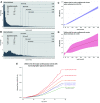
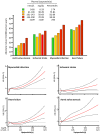
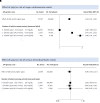

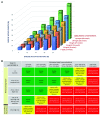
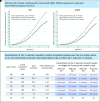
References
-
- Osnabrugge RL, Mylotte D, Head SJ, Van Mieghem NM, Nkomo VT, LeReun CM, et al. . Aortic stenosis in the elderly: disease prevalence and number of candidates for transcatheter aortic valve replacement: a meta-analysis and modeling study. J Am Coll Cardiol 2013;62:1002–1012. - PubMed
-
- Nkomo VT, Gardin JM, Skelton TN, Gottdiener JS, Scott CG, Enriquez-Sarano M. Burden of valvular heart diseases: a population-based study. Lancet 2006;368:1005–1011. - PubMed
-
- Tsimikas S, Stroes ESG. The dedicated “Lp(a) clinic”: A concept whose time has arrived? Atherosclerosis 2020;300:1–9. - PubMed
-
- Kenet G, Lutkhoff LK, Albisetti M, Bernard T, Bonduel M, Brandao Let al. . Impact of thrombophilia on risk of arterial ischemic stroke or cerebral sinovenous thrombosis in neonates and children: a systematic review and meta-analysis of observational studies. Circulation 2010; 121:1838–1847. - PubMed
MeSH terms
Substances
LinkOut - more resources
Full Text Sources
Other Literature Sources
Medical
Miscellaneous

